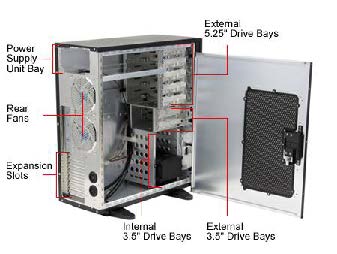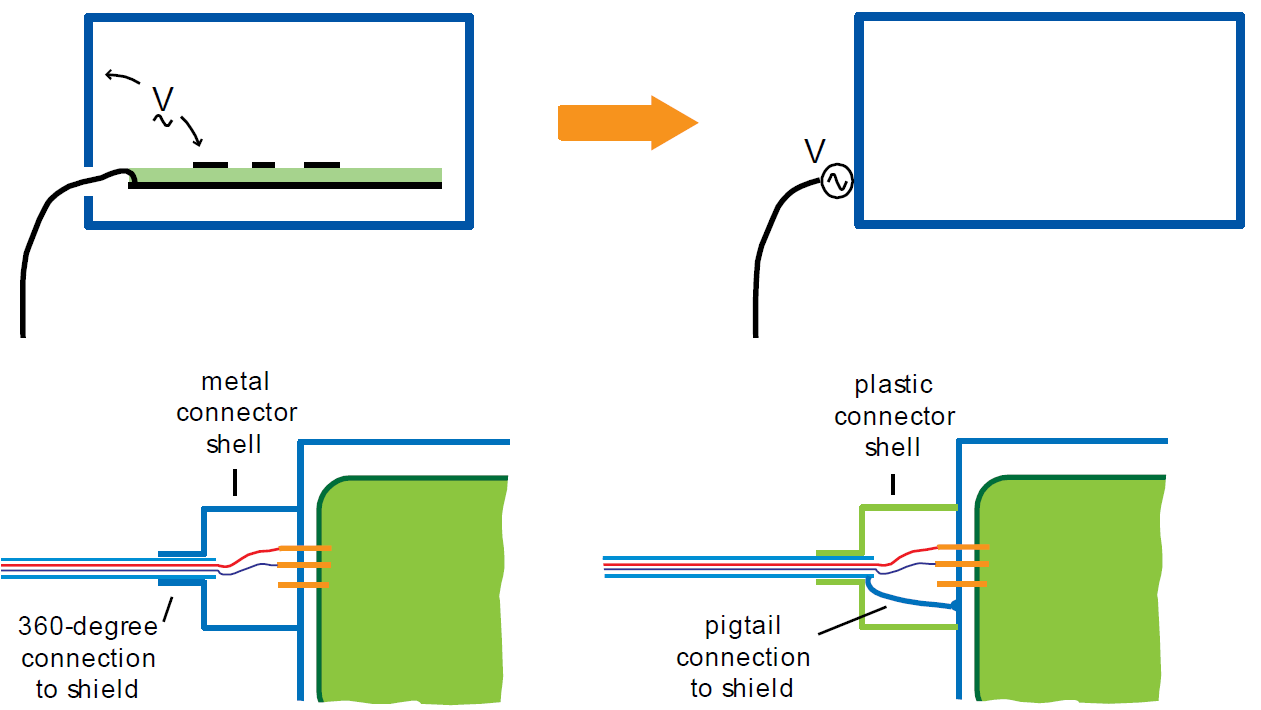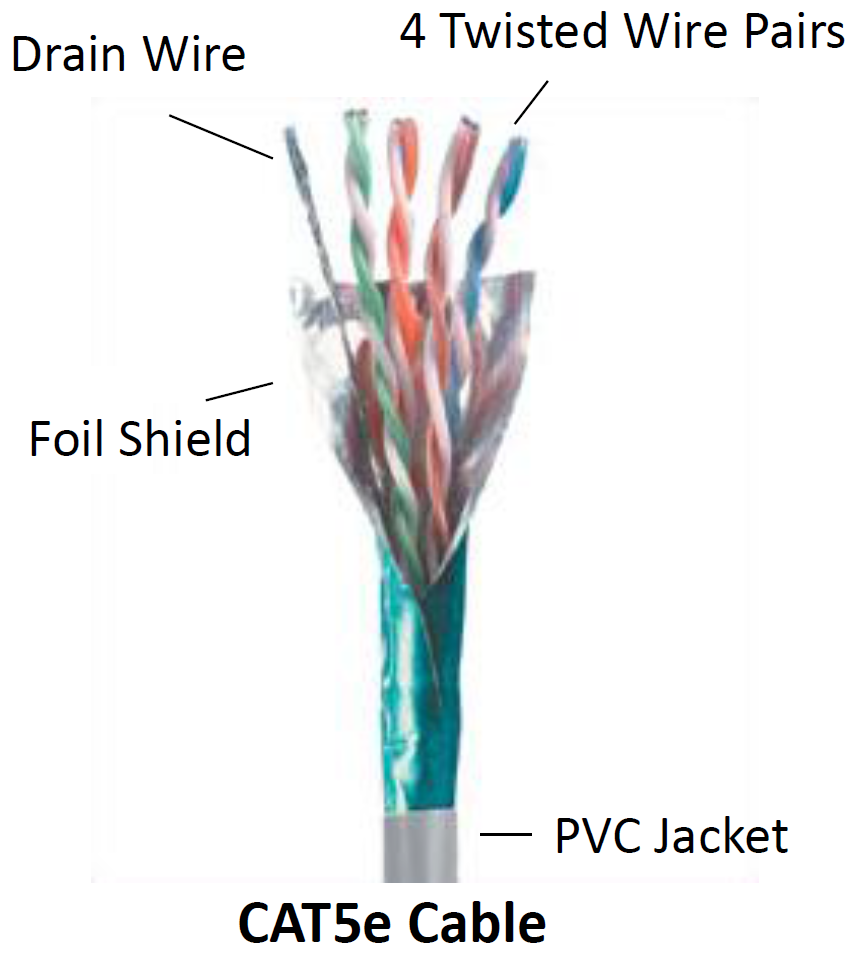16. December 2020 15:52 by Christian in
EMC/EMI, Shielding Shielded enclosure example:

Shielded enclosure connector types:

See Troubleshooting RF Noise and Fixing Ground Loops
Shielded cable types:

- Foil provides high-frequency shielding.
- Drain wire carries most of the low- frequency current.

- Foil provides high-frequency shielding.
- Braid carries high-currents.
Why Cable Shielding?
- Serves different purposes in different applications.
- Sometimes carries intentional signal currents. This is an example of self-shielding.
- May prevent coupling of external electric or magnetic fields to signals carried by wires in the cable.
- Beware of transfer impedance data. It should only be used to compare similar cables for a similar application measured with the same test set-up.
Summary of Main Points:
- Electric field shielding, magnetic field shielding, cable shielding and shielded enclosures are very different concepts requiring different materials and
approaches. - It is important to be understand the coupling mechanism you are attempting to attenuated before coming up with a shielding strategy.
- Electric field shields terminate or redirect electric fields. Where they are “grounded” is often critical.
- Magnetic field shields redirect the magnetic field. Magnetic fields cannot be terminated.
- Low frequency (<kHz) magnetic fields must be redirected with high permeability materials.
- High frequency magnetic fields can be redirected with good conductors of sufficient thickness.
- Shields and imperfect shielded enclosures can significantly increase radiated emissions.
- Shields reduce radiated emissions by disrupting the coupling from near-field sources and the “antennas” in a system.
- In the near field, shields are either electric or magnetic field shields that redirect high-frequency current flow.